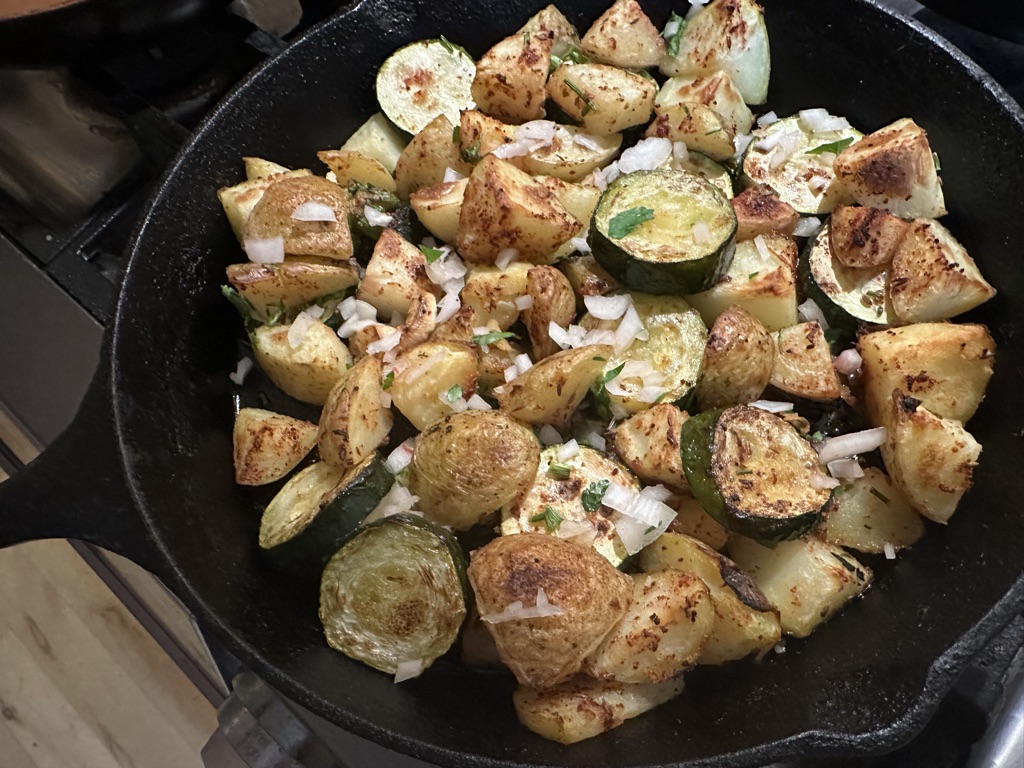

To a Blessed and Based New Year
Most cooks and eaters understand the importance of acid in food. If a dish isn’t popping as envisioned, a squeeze of lemon or dash of vinegar will sharpen the flavors with a bright zing. To a meat or cheese eater, a mouthful just isn’t the same without a sip of wine. A salad maker needs acid as much as oil and salt. Dessert makers use acid to help them add more sugar.
Scientifically speaking, an acid lowers the pH, which is a measure of how many free protons are bouncing around the scene. A base is the opposite of an acid. It raises the pH by increasing the number of free protons in the pot. The many culinary acids, including citrus and vinegar, get all of the attention while their counterpart quietly makes good things happen – sometimes by cancelling out acids. And once you learn how to properly pump up the base, nothing, including breakfast, will ever be the same. So as we head into the New Year, I’ll show you how to use baking soda and baking powder, the two most common culinary bases, to improve your eggs, potatoes, and even your morning coffee.
In contemporary slang, the term “based” carries many connotations, all of them flattering. They describe an attitude of independence, and of not caring what others think of one’s life choices, as well as most every synonym for “fabulous.”
Me, I’m old-fashioned. When I hear something is based, I still think, “who raised the pH?” But once upon a time, I was that guy in the back of the truck in Bolivia, chewing coco leaves with the farmers while nibbling upon a grey, crumbly form of limestone. As a recent chemistry graduate I knew the limestone, a base, was used to displace the cocaine, a weaker base, and make it available to enter the chewer’s bloodstream.
This chemical action is invoked by the term “free-base” cocaine, which in turn is the origin of the slang, “based,” which could have described my status that day in the back of that truck, with a year’s supply of baking soda toothpaste in my backpack. My Arm & Hammer tooth powder proved a more potent base than the lime rock, and with a minty taste no less.
Is there anything baking soda can’t do? It’s the most based thing in the kitchen, hands down. Baking powder is more complex, with thickeners and multiple rising agents, including baking soda. However you get around to it, I hope you all have a based New Year. Which is to say: be you, and be fabulous.
My furnace broke about three years ago, and I haven’t bothered to get it fixed because the flickering gas space heater keeps the house plenty warm. And one of the perks of heating by stove is that you can place things on top to gently cook. It happens to be perfect for making dulce de leche.
I fill a quart jar with milk, and add a teaspoon of vanilla and 1/2-teaspoon baking soda. The baking soda keeps the milk from becoming acidic as it condenses; which would cause it to curdle. The process is labor intensive, because you don’t stop stirring, but worth doing if you have too much milk on your hands, and can be done on a stove, on low. As it thickens, stir in up to 1/2-cup of sugar if you think it needs it.
I use the same theory in making a beverage that I drink every day, by leaving my heavily milked coffee on the stove. I use about a half cup of milk to a cup of strong coffee, along with a tablespoon of cocoa powder, a dash of vanilla extract and a pinch of baking soda. I mix it together and let it sit on the stove for at least an hour. The baking soda softens the double acid whammy of coffee and cocoa powder, while sweetening the drink with sugar from the milk. You can cheat, of course, with sweetener. But with a nuanced light roast coffee, to my taste, a cup of unsweetened Stovetop Mocha doesn’t need anything extra. Naturally sweetened from within, it goes down smooth and comfy.
A properly applied base can also improve the rest of breakfast too, including the potatoes and eggs. Add an 1/8th of a teaspoon baking powder – not baking soda – to two eggs, and beat for about a minute. This will cause the release of carbon dioxide bubbles, which will result in perhaps the fluffiest scrambled eggs you’ve ever had. Meanwhile, boiling potatoes in baking soda water before baking them creates a tater tot effect, with puffy interiors encased with delectable golden skins. Baking soda, of course, encourages the Maillard reaction, which creates the distinctive color and flavor of browned food.
Based Potatoes
Crispy on the outside and light as clouds on the inside, these potatoes will change your life.
Serves 4
2 pounds of potatoes, peeled or not peeled, and cut into roughly inch cubes
2 teaspoons baking soda
2 tablespoons olive oil
2 teaspoons salt
2 teaspoons garlic powder
2 teaspoons ground black pepper
Other spices; your choice
Add the potatoes to six quarts of salted water, and bring to a boil. When the salted, potato’d water has come to a rolling boil, add the baking soda and watch the cauldron roil.
Boil until the potatoes are soft, about 15 minutes. Drain and let dry in the colander for another ten minutes. Preheat the oven to 400 degrees.
Transfer the potatoes to a baking pan and toss with the olive oil, and then the spices. Spread the potatoes out so there is minimal touching among the spuds. Bake for 30 minutes, or until utterly delectable, whichever comes first.